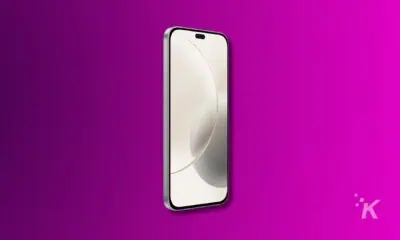Mobile
T-Mobile and SpaceX team up to end mobile dead zones
T-Mobile plans to launch ‘Coverage Above and Beyond’ next year.

Just a heads up, if you buy something through our links, we may get a small share of the sale. It’s one of the ways we keep the lights on here. Click here for more.
T-Mobile has partnered with private spaceflight firm SpaceX to extend 5G coverage to the entire United States via existing Starlink satellites.
The project — dubbed “Coverage Above and Beyond” — will eventually provide a basic 2-4Mbps connection to every T-Mobile customer in the continental US, Hawaii, Alaska, territorial waters, and “parts of Alaska.”
The service works with existing 5G devices and does not require the consumer to buy propietary hardware or software.
These speeds trail normal cellular data speeds, but that’s not the point. It’ll ensure people have a basic cellular connection when in isolated areas, or during times of natural disaster.
The nuts and bolts

T-Mobile intends to use existing SpaceX hardware. The service will use the 1.9GHz PCS (Personal Communication Service) spectrum it inherited from Sprint in 2019.
Sprint originally used its 1.9GHz spectrum to deliver 2G, 3G, and eventually, 4G spectrum services. By contrast, most commercial 5G services use higher frequencies. These are typically between the 3.5GHz-6GHz range, or above 25GHz for high-speed mmWave services.
There’s a place for low-to-mid bands in the 5G ecosystem. Although services delivered on lower frequencies are slower, they enjoy a much longer range.
In the UK, carriers are even repurposing the sedate 700MHz band to deliver 5G services to rural areas. With fewer cell towers required, it becomes economically viable to serve areas with a low population density.
In the case of T-Mobile’s satellite-to-cellular service, that range will be even larger, due to the lack of natural obstacles between the customer and the satellite. It’s a clear shot through the ionosphere.
The bottom line

T-Mobile did not disclose the terms of its deal with SpaceX. That said, I imagine it would be cheaper than delivering coverage through conventional means.
Cell towers are eye-wateringly expensive. And that’s before we get into the costs of connecting the towers to the central network (called ‘Backhaul’).
Because carriers can’t rely on the nimble fiber-optic connections endemic in urban areas, they have to use pricier alternatives. These include microwave radio links and satellite connections.
Compounding matters further, rural cellular deployments must wrestle with environmental and logistical concerns.
How do you maintain a cellular network that’s hundreds of miles from your nearest office? And how do you build coverage in a national park, where construction is restricted? This new partnership eases those problems.
When will it launch?
T-Mobile intends to launch Coverage Above and Beyond in “select areas” by next year. The company has taken a cautious approach, and users will not be able to use Starlink for voice or data.
It will, however, support SMS messaging, MMS, and “selected messaging apps.”
Sadly, T-Mobile did not reveal which “select areas” or the supported messaging apps. Voice and unfettered data will eventually follow, although the company did not say when.
T-Mobile expressed a desire for other providers to follow its path. In a press release, the company said it would offer reciprocal roaming access to other networks that deploy satellite-to-cellular technology.
Have any thoughts on this? Carry the discussion over to our Twitter or Facebook.
Editors’ Recommendations:
- T-Mobile is now selling your app usage data to advertisers
- How many rockets does SpaceX need to throw into orbit before we can leave this dump?
- T-Mobile is once again the 5G leader in the US
- Twitter is officially suing Elon Musk for not buying Twitter




























